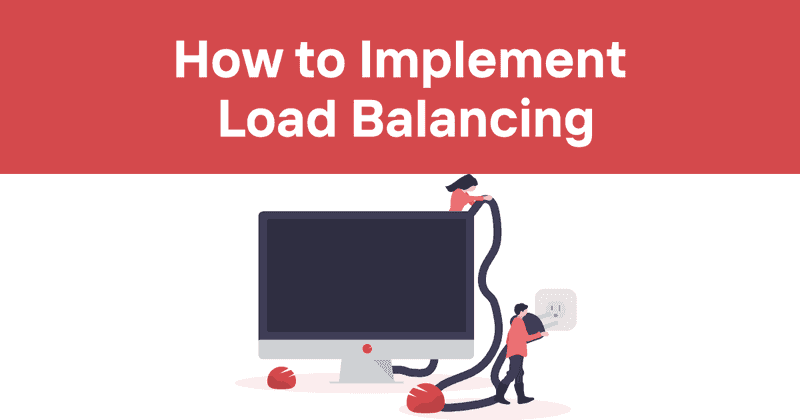Load Balancing Demystified: Boosting Your App's Resilience and Performance
Ever wondered how massive websites handle millions of users without breaking a sweat? Well, buckle up, because we're about to dive into the world of load balancing - the unsung hero of high-traffic applications.
As a developer who's battled my fair share of server meltdowns (trust me, it's not pretty), I've come to appreciate the art and science of load balancing. It's like conducting a digital orchestra, making sure every instrument plays its part without overwhelming the others.
In this article, I'll break down the ins and outs of load balancing, sprinkle in some real-world examples, and maybe even crack a bad joke or two. By the end, you'll have a solid grasp on how to implement load balancing and why it's crucial for keeping your apps running smoothly.
So, grab your favorite caffeinated beverage, and let's get started!
Table of Contents
- What the Heck is Load Balancing, Anyway?
- Why You Should Care About Load Balancing
- Load Balancing Algorithms: Picking Your Flavor
- Types of Load Balancers: Hardware vs. Software
- Implementing Load Balancing: A Step-by-Step Guide
- Load Balancing Protocols: HTTP, TCP, and More
- Common Load Balancing Challenges (and How to Tackle Them)
- Load Balancing Best Practices
- Tools and Technologies for Load Balancing
- Real-World Load Balancing Examples
- Monitoring and Maintaining Your Load Balanced System
- Wrapping Up: The Future of Load Balancing
What the Heck is Load Balancing, Anyway?
Alright, let's start with the basics. Load balancing is like being a really efficient traffic cop for your web applications. Instead of letting all your users crowd onto one server (imagine Black Friday at a store with only one cashier), load balancing distributes incoming network traffic across multiple servers.
The goal? To ensure no single server bears too much demand. By spreading the love, load balancing helps prevent any one server from becoming a bottleneck, which could slow down your application or, worse, take it offline entirely.
Picture this: You're hosting a massive party (your web application), and guests (user requests) are pouring in. Without load balancing, they'd all try to squeeze through one door (server), creating chaos. With load balancing, you've got multiple doors, each with a friendly bouncer (load balancer) directing guests to the least crowded entrance.
Why You Should Care About Load Balancing
Now, you might be thinking, "Do I really need this? My app isn't exactly Facebook." Well, let me tell you why load balancing isn't just for the big players:
-
Improved Performance: By distributing requests across multiple servers, you can reduce response times and improve overall application speed. Your users will thank you for not making them wait around like they're at the DMV.
-
High Availability: If one server goes down (and let's face it, servers can be drama queens sometimes), the load balancer can redirect traffic to the remaining healthy servers. It's like having a backup singer ready to take the lead if the star gets laryngitis.
-
Scalability: As your application grows, you can easily add more servers to your pool. The load balancer will automatically start directing traffic to the new servers. It's like adding more lanes to a highway without stopping traffic.
-
Flexibility: Need to take a server offline for maintenance? No problem. The load balancer can stop sending traffic to that server without your users ever noticing. It's like changing a tire while the car is still moving (don't try this at home, folks).
-
Security: Some load balancers can help mitigate DDoS attacks by distributing the malicious traffic across multiple servers, making it harder for attackers to overwhelm a single target.
Load Balancing Algorithms: Picking Your Flavor
Load balancers use various algorithms to decide which server should handle each incoming request. It's like choosing the perfect ice cream flavor - there's no one-size-fits-all solution. Here are some popular algorithms:
-
Round Robin: Requests are distributed sequentially to each server in the pool. It's simple and fair, like taking turns in kindergarten.
-
Least Connections: New requests go to the server with the fewest active connections. It's like choosing the shortest checkout line at the supermarket.
-
IP Hash: The client's IP address determines which server handles the request. It ensures that a specific client always connects to the same server, which can be useful for maintaining session data.
-
Weighted Round Robin: Similar to Round Robin, but some servers are capable of handling more load and receive a larger share of requests.
-
Least Response Time: Directs traffic to the server with the fastest response time. It's like picking the waiter who brings your food the quickest.
Here's a quick comparison table of these algorithms:
| Algorithm | Pros | Cons | Best For |
|---|---|---|---|
| Round Robin | Simple, easy to implement | Doesn't account for server load | Servers with similar specifications |
| Least Connections | Accounts for current server load | Requires more processing by the load balancer | Servers with varying capacities |
| IP Hash | Maintains client-server affinity | Can lead to uneven distribution if many clients share an IP | Applications requiring session persistence |
| Weighted Round Robin | Allows for servers with different capacities | Requires manual configuration of weights | Mixed environments with different server capacities |
| Least Response Time | Optimizes for actual server performance | Can be more complex to implement | High-performance applications |
Types of Load Balancers: Hardware vs. Software
When it comes to load balancers, you've got two main camps: hardware and software. It's like the age-old debate of books vs. e-readers (I'm team book, by the way, but I digress).
Hardware Load Balancers
These are physical devices dedicated to load balancing. They're like the bodybuilders of the load balancing world - powerful, purpose-built, and a bit inflexible.
Pros:
- High performance
- Purpose-built hardware
- Often include specialized features
Cons:
- Expensive
- Limited scalability
- Can become a single point of failure
Software Load Balancers
These are applications that run on standard servers or in the cloud. They're like the yoga instructors of load balancing - flexible, cost-effective, and able to adapt to changing needs.
Pros:
- Cost-effective
- Highly flexible and scalable
- Easy to upgrade and modify
Cons:
- May have lower performance than hardware solutions
- Require more configuration and management
In my opinion, unless you're running a massive enterprise application, software load balancers are usually the way to go. They offer more flexibility and are easier on the wallet.
Implementing Load Balancing: A Step-by-Step Guide
Alright, let's roll up our sleeves and get into the nitty-gritty of setting up load balancing. Here's a general approach:
-
Choose Your Load Balancer: Decide between hardware or software, and select a specific product or tool.
-
Set Up Your Server Pool: Ensure you have multiple servers ready to handle requests.
-
Configure Your Load Balancer: This includes setting up the algorithm, health checks, and any specific rules.
-
Direct Traffic to the Load Balancer: Update your DNS to point to the load balancer instead of individual servers.
-
Test and Monitor: Verify that traffic is being distributed correctly and monitor server health.
Here's a simple example using Nginx as a software load balancer:
upstream backend {
server backend1.example.com;
server backend2.example.com;
server backend3.example.com;
}
server {
listen 80;
location / {
proxy_pass http://backend;
}
}
}
This configuration sets up a simple Round Robin load balancing across three backend servers.
Load Balancing Protocols: HTTP, TCP, and More
Load balancers can work at different layers of the OSI model, primarily at Layer 4 (Transport) or Layer 7 (Application). It's like choosing between a Swiss Army knife and a specialized tool - each has its place.
Layer 4 Load Balancing
This operates at the transport layer, dealing with TCP and UDP protocols. It's fast and efficient but doesn't look at the content of the packets.
Pros:
- High performance
- Simple configuration
- Works with any application protocol
Cons:
- Limited routing options
- Can't make decisions based on packet content
Layer 7 Load Balancing
This works at the application layer, allowing decisions based on the content of the request (like URL or HTTP headers).
Pros:
- More intelligent routing
- Can handle content-based distribution
- Supports features like SSL termination
Cons:
- Higher resource usage
- More complex configuration
In my experience, Layer 7 load balancing is often worth the extra complexity for web applications, as it allows for more sophisticated traffic management.
Common Load Balancing Challenges (and How to Tackle Them)
Even with load balancing, life isn't always sunshine and rainbows. Here are some common challenges you might face:
-
Session Persistence: Some applications require users to stick to the same server. Solution: Use IP Hash algorithm or implement session sharing between servers.
-
SSL Termination: Handling SSL/TLS can be resource-intensive. Solution: Terminate SSL at the load balancer level to offload this work from application servers.
-
Health Checks: Ensuring only healthy servers receive traffic. Solution: Implement robust health check mechanisms in your load balancer configuration.
-
Uneven Load Distribution: Some servers might end up handling more requests than others. Solution: Fine-tune your load balancing algorithm and monitor server performance closely.
-
Scaling: Adding or removing servers without disruption. Solution: Use dynamic server pools and automate the process of adding/removing servers.
Load Balancing Best Practices
After wrestling with load balancers for years, here are some tips I've picked up:
-
Always Have a Backup: Set up multiple load balancers to avoid a single point of failure.
-
Monitor, Monitor, Monitor: Keep a close eye on your server health and load distribution.
-
Test Failover Scenarios: Regularly test what happens when a server goes down.
-
Use Autoscaling: Combine load balancing with autoscaling for maximum flexibility.
-
Keep It Simple: Start with a simple configuration and add complexity only as needed.
-
Security First: Ensure your load balancer doesn't become a security vulnerability.
-
Document Everything: Trust me, future you will thank present you for good documentation.
Tools and Technologies for Load Balancing
There's a smorgasbord of load balancing tools out there. Here are some popular ones:
- Nginx: A versatile web server that can also act as a load balancer.
- HAProxy: A high-performance TCP/HTTP load balancer.
- AWS Elastic Load Balancing: Amazon's cloud-based load balancing solution.
- Google Cloud Load Balancing: Google's offering in the cloud load balancing space.
- F5 BIG-IP: A hardware load balancer for enterprise-level applications.
Each has its strengths, so choose based on your specific needs and infrastructure.
Real-World Load Balancing Examples
Let's look at how some big players use load balancing:
- Netflix: Uses Elastic Load Balancing in AWS to handle millions of streaming requests.
- Facebook: Implements a combination of hardware and software load balancers to manage its massive traffic.
- GitHub: Utilizes HAProxy for load balancing, which helped them achieve 100% availability during the famous Unicorn attack.
These examples show how load balancing is crucial for maintaining high availability and performance at scale.
Monitoring and Maintaining Your Load Balanced System
Setting up load balancing is just the beginning. Ongoing monitoring and maintenance are crucial. Here's what you should keep an eye on:
- Server Health: Regularly check if all servers in the pool are functioning correctly.
- Traffic Distribution: Ensure that load is being distributed as expected.
- Response Times: Monitor how quickly requests are being processed.
- Error Rates: Keep track of any errors occurring in your system.
- Resource Utilization: Monitor CPU, memory, and network usage across your servers.
Tools like Prometheus, Grafana, or cloud-native monitoring solutions can help you keep tabs on these metrics.
Wrapping Up: The Future of Load Balancing
As we look to the future, load balancing is evolving along with the rest of the tech world. We're seeing trends like:
- AI-driven load balancing: Using machine learning to predict traffic patterns and optimize distribution.
- Edge load balancing: Bringing load balancing closer to users for even faster response times.
- Container-native load balancing: Specialized solutions for containerized environments like Kubernetes.
Load balancing isn't just a nice-to-have anymore - it's a crucial component of any robust, scalable application. By implementing load balancing, you're not just improving performance; you're building resilience into your system.
Remember, a well-balanced load is a happy load. And a happy load means happy users, which means a happy you. So go forth and balance those loads!
Oh, and one last thing - while you're implementing all this fancy load balancing, don't forget about monitoring. That's where a tool like Odown.io comes in handy. It can keep an eye on your website and APIs, making sure your load-balanced system is performing as expected. Plus, with its public and private status pages and SSL certificate monitoring, you'll have all the tools you need to keep your system running smoothly and your users informed. Because let's face it, even with the best load balancing in the world, things can still go wrong - and when they do, you want to be the first to know.
Now, if you'll excuse me, I need to go balance the load of coffee in my mug. Happy coding!



